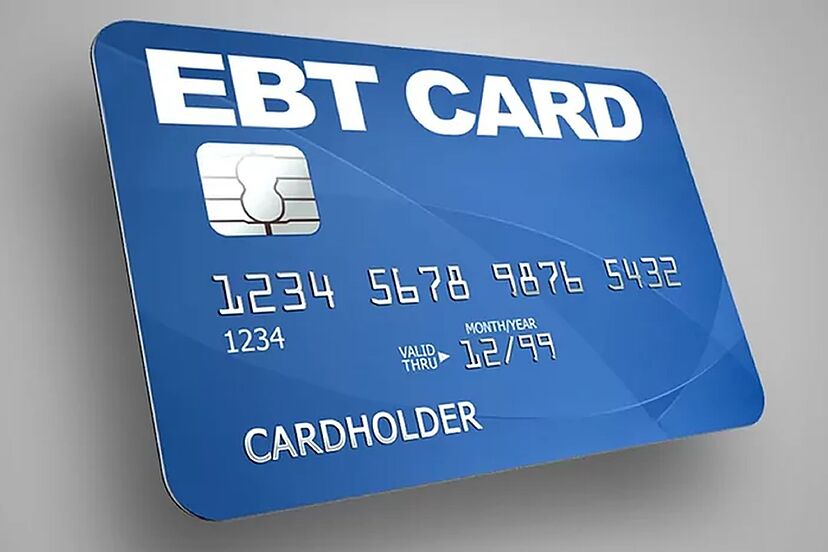Ebt down: Electronic benefits transfer (EBT) is a type of system that makes use of a credit card similar to a debit card, which allows recipients of benefits provided by the government, like food stamps to transfer funds to merchants directly to purchase items. States provide benefits to their citizens and monitor the usage of those benefits using EBT and Solutions to fix the EBT down server.
Understanding Electronic Benefits Transfer (EBT)
EBT system has been in operation since 2004 and was employed to process payments for the Supplemental Nutrition Assistance Program ( SNAP) in all states. Its implementation has been increasing within other programs for nutrition of the Federal government.
The card is given to the users. card it can be a debit or credit card, which comes equipped with a chip and a pin. Alongside the SNAP card, there are other programs that are testing or using the EBT including the Particular Supplemental Food Program (WIC) Women, Infants, and Children ( WIC) and the Temporary Assistance to the Most in Need Families (TANF) and as a variety of general aid programs provided by states.

Cash and food stamp benefits are transferred to electronic benefit accounts, which are accessible through your PIN. Card users have the option of shopping at EBT stores that are participating along with ATMs as well as point-of-sale (POS) terminals.
It’s worth noting that the Food Stamp Program was renamed the Supplemental Nutrition Assistance Program by Congress in 2008. These programs are funded by the federal government. However, they are managed by the states that work with contractors in order to buy their own EBT system for the management of SNAP in addition to other benefit programs run by states.
After a beneficiary has been eligible for benefits after a state’s EBT contractor establishes an account for the beneficiary, the beneficiary’s SNAP benefits, are transferred electronically to the account every month.
Each state is equipped with an electronic system that utilizes magnetic strips and online issuance for transactions. The processor confirms that the PIN is correct and also the balance in the account. Then, it issues the authorization or deny to the seller.
The account of the buyer will be debited with the purchase amount that the transaction has cost. The retailer’s account is then credited. There is no transfer of cash. Taxes related to charges, sales, or “processing charges” can be imposed on accounts under Federal law. The payment is due to the retailer by the end of each working day.
What Are The Main Reasons Behind the EBT Down

Technical Issues:
- Hardware malfunctionsHardware components such as servers, storage devices as well and network equipment could be damaged because of wear and tear, as well as various other factors. This issue is fixable by identifying the hardware that is malfunctioning, before replacing it, and making sure that regular maintenance takes place to prevent any further issues.
- Software Problems: Software malfunctions and code errors or compatibility issues may result in system malfunctions. To fix the issues, analyze your program and then modify it or update the software, and also run rigorous tests to verify that the system is stable.
- Network ProblemsIn the event of network disruptions such as interruptions or bandwidth limitations can cause issues with the EBT system’s access. To address the issue, companies need a reliable infrastructure for the network. They should install multiple redundant systems to protect crucial elements as well as monitor the performance of networks regularly.
Maintenance as well as Updates:
- Regular updates and maintenance of the system are vital for ensuring it is the EBT system is running smoothly and current.Agencies can minimize disruption through scheduling maintenance in non-peak time, providing alternative services during delays, and communicating ahead of time to customers.
Security Incidents:
- Security breaches, including hacking or attacks on data, can affect the security of the EBT.EBT is a system. In order to fix such issues it is essential to determine what was the cause of the security breach, minimize the threat, and increase security by implementing encryption and intrusion detection systems, as and regular security inspections.
Higher Demand
- When there are emergencies or natural disasters there is a potential increase in the need for EBT solutions. Agents should be prepared for this through a robust infrastructure and plans for disaster recovery and be able to swiftly allocate additional resources in order to deal with increased demand.
Procedural or Administrative Errors:
- Improper administrative steps such as mistakes when setting up the system, could affect EBT’s services. A proper education program, solid methods of quality assurance, and periodic audits can reduce the consequences of such errors.
Communication Issues:
- An efficient and clear communication system is crucial should there be a in the event of system failure. The agencies should establish clearly defined communications protocols and channels in order in order to ensure that everyone involved like suppliers, users, as well as government officials knows about the situation at hand as well as the progress and the anticipated resolution timeframes.
User Errors:
- issues affecting customers could arise from errors, for instance, typing the incorrect PIN or using an EBT card. Solving these issues will require information, clearly written directions, and customer assistance to assist customers when they make transactions.
Natural Disasters:
- Natural catastrophes may cause disruption to EBT services through damage to equipment. The agencies need to have plans for disaster recovery. This includes backups of data stored offsite, alternative processing facilities, as well as methods to speedily recover services following the event.
Here Are Some Troubleshooting Steps To Resolve Ebt Down
Resolving problems such as the Ebt down can be a complicated procedure, dependent on the exact cause of the issue. These are the steps you can take to solve EBT Down issues:
Identify the Issue:
- Start by identifying the primary source of the problem. Could it be a hardware malfunction or software issue, a security issue, or some other problem? Knowing the root of the issue is crucial for a proper solution.
Isolate the Affected Components:
- Find out which components in the system have been impacted by these issues. Do you think it is a specific server, part of a network, or an overall system issue? Separate the affected component to stop further disruptions.
Technical Resolution:
- In the event of hardware malfunctions, you must fix or replace the equipment as soon as you can.
- To resolve software-related issues, pinpoint the exact error or bug and then apply updates, fixes, or patches.
- To resolve network issues, you must investigate and resolve the root issue, regardless of whether the problem is due to connectivity or a bandwidth issue.
Security Mitigation:
- If your downtime is related to an incident in the security, take action to address the security breach, close the vulnerability, and put greater security procedures in place. It may require collaboration with cybersecurity experts.
Implement Redundancy:
- Implement failover and redundancy mechanisms within the system to reduce the potential impact of future incidents. It could involve using backup servers, data centers, or even network connections.
Scheduled Maintenance and Upgrades:
- If downtime is related to planned upgrades or maintenance be sure to follow a defined plan and notify all parties as well as users about the duration of the downtime. Ensure the process is executed effectively and your system is properly tested following the completion.
Scalability:
- In the event of issues arising from increased consumption, be sure your system can handle large demands. Some measures for scaling are cloud-based as well as load balancing and the temporary allocation of resources.
Disaster Recovery:
- Test and implement regularly the disaster recovery plans, which outline steps to restore EBT service in the event of natural disasters or significant interruptions.
User Education:
- If errors by the user are an issue that is repeated, offer the user education and clear directions about the proper usage of EBT cards and PINs.
Communication and Transparency:
- Keep in constant and open communication with the users and other stakeholders during the time of outage. Regularly update stakeholders about the condition of the system, as well as the anticipated time frame for resolution.
Post-Incident Analysis:
- Once you have resolved the issue, analyze the incident post-incidentally to discover the cause of the issue and what was done to fix it. Make use of this data to enhance the overall system’s resilience.
Continuous Monitoring:
- Continuously monitor your system and proactive maintenance to find problems and fix them before they cause the system to be down .
Keep in mind that the actions necessary to correct problems with your EBT system are contingent upon the specifics of the issue. It’s essential to have an incident response strategy that is well-documented as well as a group of specialists that can rapidly identify problems and address them to reduce the negative impact for those who depend on EBT to fulfill their basic needs.
